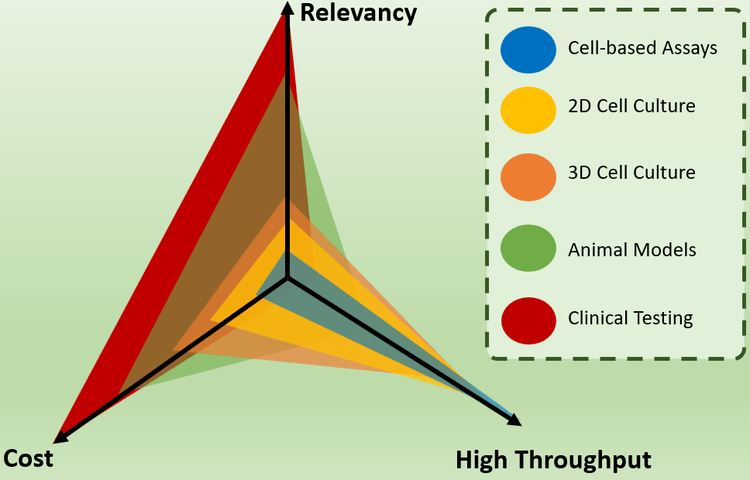In the last decade there has been significant research interest in developing improved in vitro models that reduce the need for animal models while providing a better prediction of in vivo toxicity and efficacy. The rational for this is ethical but also practical in that in vitro models are generally higher throughput, are more inexpensive and are highly customizable based on the application. Out of this interest has sprung the field of 3D cell culture models (e.g. organoids, spheroids, microtissues) as well as a more recent interest in organs and bodies on a chip. The goal for these advanced in vitro models is to better recapitulate the complex microenvironment of tissues.
Because Visikol offers advanced in vitro assays, we are commonly asked about which models are best and asked to compare models side-by-side. However, the notion of asking which model is best belies the misconception that these advanced models are in fact miniature organs in a well. While we have made progress towards improving in vivo relevancy, even the best in vitro model is far from being a miniature organ in well and all models will have significant limitations. Advanced in vitro models can vary in complexity from a single cell type spheroid to a multichambered chip system with multiple organotypic 3D cell culture models interacting with one another through microfluidics.
Therefore, the question really is not which model is best, but what model is best for my specific research question. For example, a researcher using advanced in vitro models to study liver toxicity might use several different types of models to answer different types of questions about NASH, DILI, fibrosis etc. The rationale for this purpose driven approach is that complexity increases costs and you do not necessarily need to have the most organotypic model to answer your research question depending on what it is.
The other overarching misconception about these models is where they fit into the drug discovery continuum as many advocates see them as a replacement for current in vitro assays and in vivo research altogether. Currently, in vitro assays are beginning to displace some 2D in vitro assays as well as some animal testing, but overall these models are still limited and tend to fill in a niche drug discovery space between traditional in vitro and in vivo assays. The reason for this is that deciding to use a drug discovery assay involves a balance between the competing interests of throughput, cost and relevancy. While the cost and throughput can easily be determined, this field is still immature and substantial research is being conducted to determine to what degree these models actually do improve relevancy based upon varying research questions.

